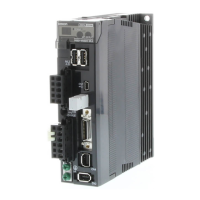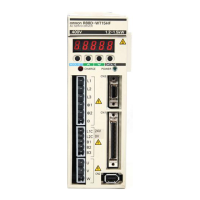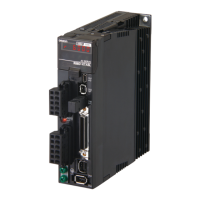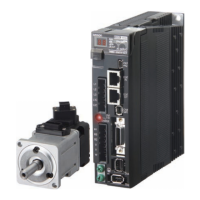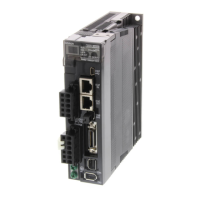8-1
8-1 Error Processing
8
Troubleshooting
8Troubleshooting
8-1 Error Processing
This section explains preliminary checks required to determine the cause of problems that might
occur and cautions for the problems.
Preliminary Checks When a Problem Occurs
This section explains the preliminary checks and analytical tools required to determine the cause of
problems that might occur.
Checking the Power Supply Voltage
Check the voltage at the power supply input terminals.
Main-circuit Power Supply Input Terminals (L1, (L2), L3)
R7D-BP@@L: Single-phase 100 to 115 VAC (85 to 127 V), 50/60 Hz
R7D-BP02HH: Single-phase 200 to 240 VAC (170 to 264 V), 50/60 Hz
R7D-BP@@H: Single-phase/three-phase 200 to 240 VAC (170 to 264 V), 50/60 Hz
R7D-BP02H: Three-phase 200 to 240 VAC (170 to 264 V), 50/60 Hz
If the voltage is outside of this range, there is a risk of operation failure. Be sure to supply the power
correctly.
Check the voltage for the sequence input power supply:
Within the range of 11 to 25 VDC (+24 VIN terminal (pin CN1-1)).
If the voltage is outside of this range, there is a risk of operation failure. Be sure to supply the power
correctly.
Checking Whether an Alarm Has Occurred
Check the alarm LED indicator on the front of the Servo Drive to see whether an alarm has occurred,
or check the alarm code on the Parameter Unit.
When an alarm has occurred:
Check the status of the alarm LED indicator (ALM) and evaluate the problem based on the alarm
indicated.
Check the alarm code and perform analysis based on the alarm code information.
When an alarm has not occurred:
Make an analysis according to the problem.
Note In either case, refer to 8-3 Troubleshooting for details.
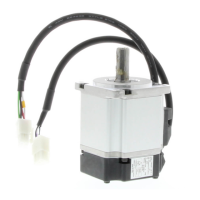
